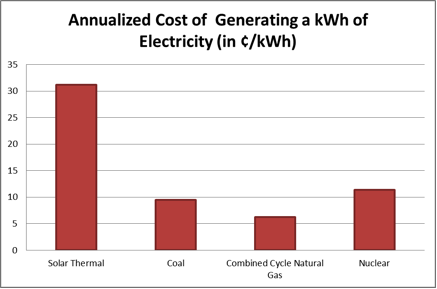- May 17, 2013
- 67,642
- 32,795
- 2,290
As the chart shows, solar costs 3 times the cost of coal and 5 times the cost of Natural Gas...............per kwh
The Coal infrastructure is in place. The Natural Gas infrastructure is not in place. It can be built, but it is being built as the Gov't has targeted coal for destruction.
It figures the gov't favors the highest cost method of producing power.
The Coal infrastructure is in place. The Natural Gas infrastructure is not in place. It can be built, but it is being built as the Gov't has targeted coal for destruction.
It figures the gov't favors the highest cost method of producing power.



